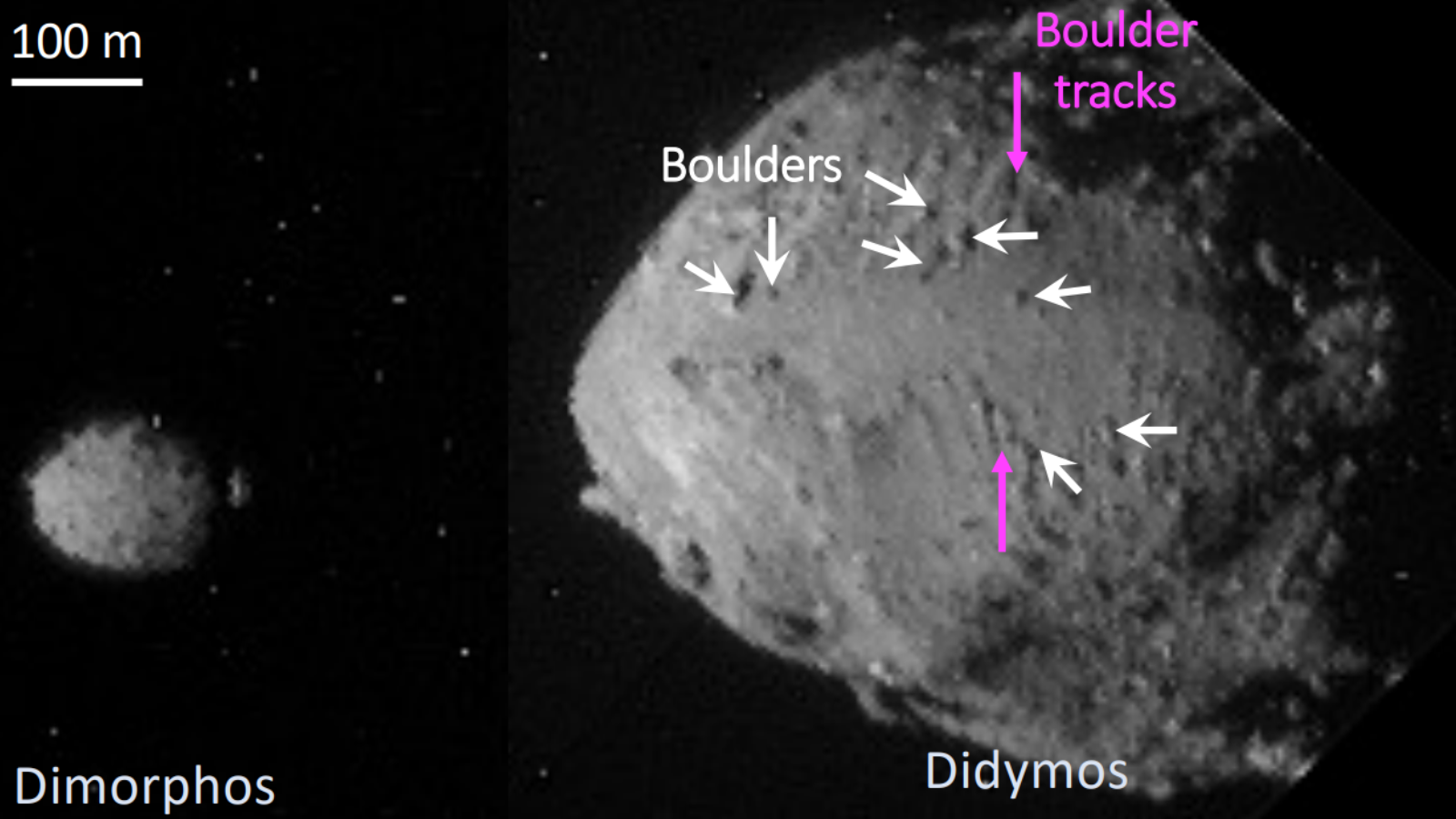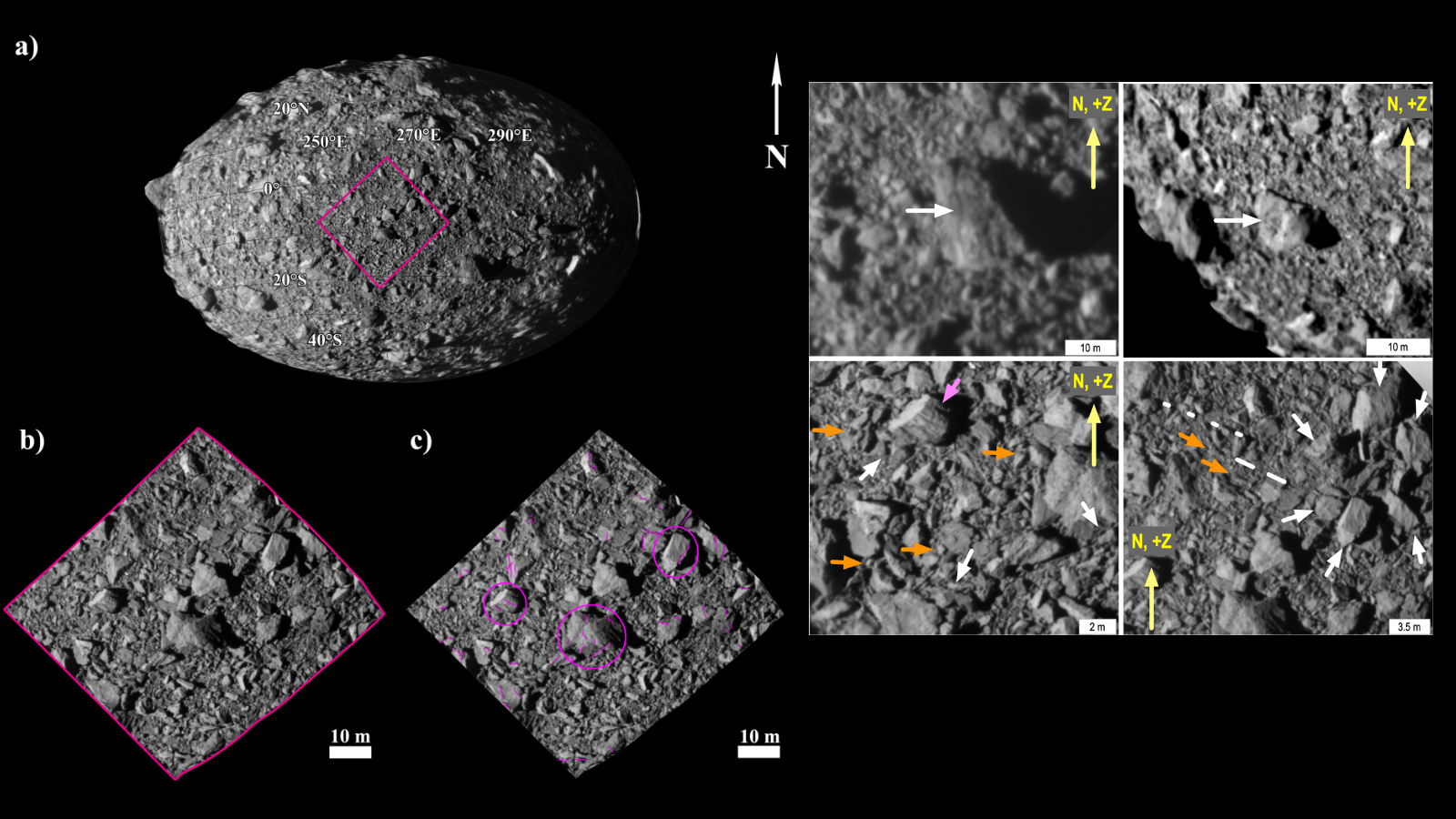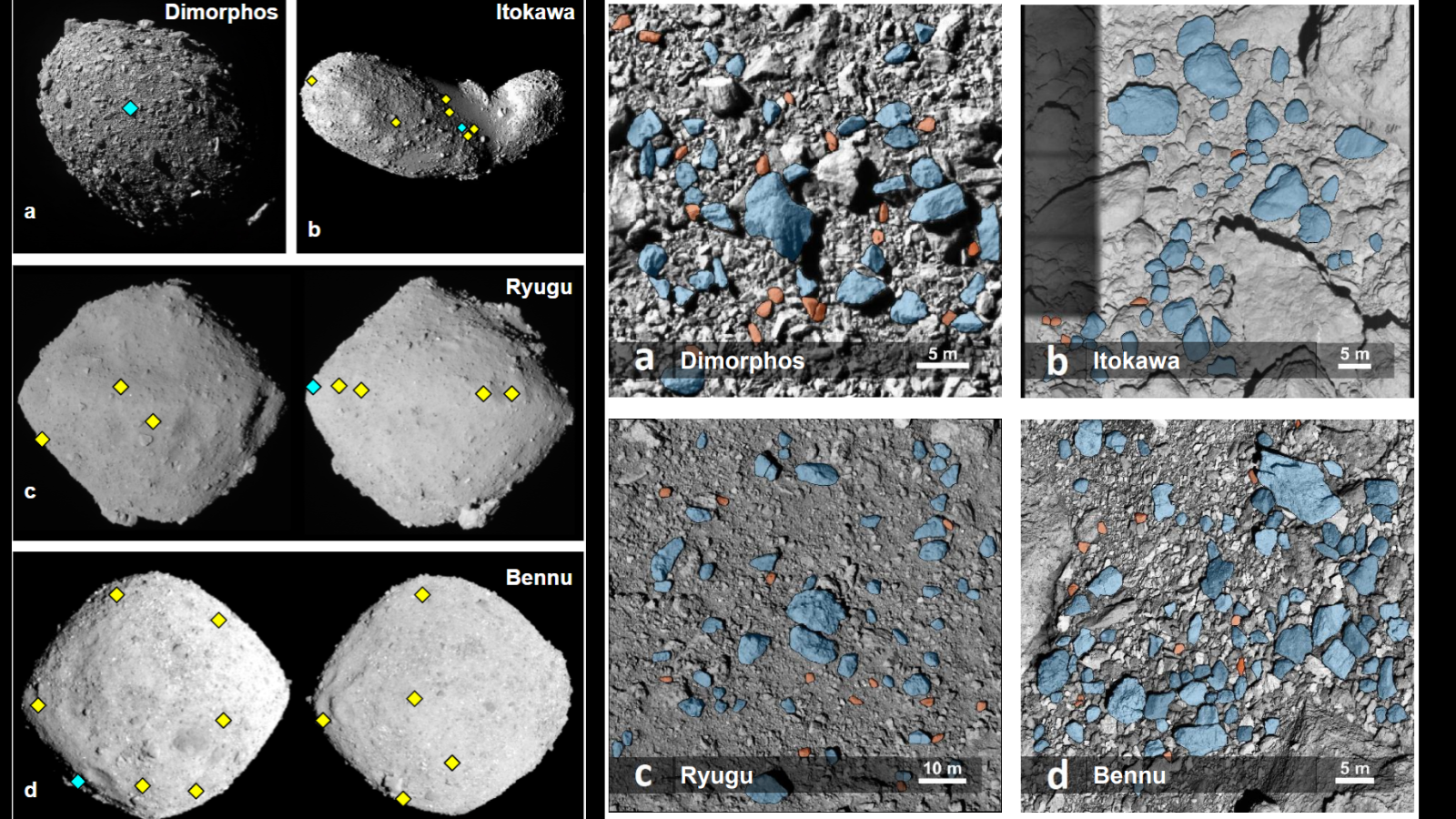NASA's DART asteroid impact mission revealed ages of twin space rock targets (images)
New findings show Dimorphos was formed by material shed from Didymos around 0.3 million years ago.

Scientists have used images collected by NASA's DART asteroid impact mission to paint a more detailed picture of its asteroid targets Didymos and Dimorphos. The research could help better understand the formation and evolution of binary asteroids such as these.
DART, which stands for "Double Asteroid Redirection Test," only impacted the smaller body in this double-asteroid binary system, the moonlet Dimorphos, which orbits the larger space rock Didymos. Still, the aim was to see what influence such an impact would have on both bodies. The data collected during this successful mission could help scientists better plan a planetary defense mission to divert an asteroid on a collision course with Earth.
Before crashing into Dimorphos on Sept. 26, 2023, DART was able to take images of the two near-Earth asteroids. In unison with data from the Light Italian Cubesat for Imaging of Asteroids (LICIACube) mission, researchers were able to determine some of Didymos and Dimorphos's geological features and physical properties.
The team, led by Olivier Barnouin from the Johns Hopkins University Applied Physics Laboratory, studied the surface of Didymos, the larger of the two asteroids. The researchers found that at high elevations, Didymos is rough and hosts large boulders between 33 and 525 feet (10–160 meters) long and several craters. At low elevations, this asteroid's surface becomes smoother, with fewer large rocks and craters.
Its smaller moonlet companion, Dimorphos, has rocks across its surface that have a wider range of sizes. While the surface of Dimorphos is mostly craterless, it is riven with several cracks or "faults."
The findings helped Barnouin and colleagues determine that Dimorphos likely formed from material flung away from Didymos and then clumped together under the influence of gravity.
The team used the number of craters on both asteroids to gauge the ages of the two asteroids. they determined that the parent body Didymos is 12.5 million years old, between 40 to 130 times older than Dimorphos. They estimated the age of the moonlet to be around 0.3 million years.
Get the Space.com Newsletter
Breaking space news, the latest updates on rocket launches, skywatching events and more!
Related: NASA's asteroid-impacting DART mission completely changed the shape of its target

Looking at the size of boulders and their distribution across Dimorphos, a separate team of scientists led by Maurizio Pajola from the INAF - Astronomical Observatory of Padova determined that they formed at different times rather than all at once.
This implies that the rocks on the surface of Dimorphos are directly inherited from Didymos, further supporting the idea that the moonlets in binary asteroid systems form from material shed by their larger partners. This process would also explain a distinctive ridge at the equator of the parent body, Didymos.
Another team of researchers led by Naomi Murdoch from the Université de Toulouse looked at boulder tracks traced across the surface of Didymos. They found the surface of Didymos is composed of very loose material, capable of supporting much less weight than dry sand on Earth or lunar soil on the moon.
Meanwhile, Alice Lucchetti, from the INAF-Astronomical Observatory of Padova also and colleagues found that boulders at the surface of Dimorphos are being fractured over a period of around 100,000 years by a process called "thermal fatigue," which results from changing temperatures causing micro-fractures in the rock.
Though 100,000 years may seem like an incredibly long time to us, in geological terms, it is a short period, especially in a solar system that is around 4.6 billion years old. This means that the thermal fatigue experienced by Dimorphos is rapid. This is the first time that rapid thermal fatigue has been seen on a rocky asteroid made up of silicate materials and nickel-iron.

A third team, led by Université de Toulouse researcher Colas Robin, compared 34 boulders on the surface of Dimorphos that ranged from 5.5 feet (1.67 meters) to 22 feet (6.7 meters) to rocks found on the loose "rubble-pile" asteroids Itokawa, Ryugu, and Bennu.
They found similarities between the morphology of the rocks of all of these asteroids and suggested to Robin and colleagues a common formation and evolution mechanism.
The teams' results build a detailed picture of the Didymos system as it was before the impact of the DART on Dimorphos. The findings could help inform the upcoming Hera mission from the European Space Agency (ESA).
Set to launch in October this year, Hera will meet Didymos and Dimorphos in September 2026. One at the Didymous binary system, Hera, will capture higher-resolution data that allows for a more comprehensive examination of the system as it is after the DART impact. This should help scientists better determine the aftermath of DART's collision with Dimorphos.
The three team's research papers were published on Tuesday (July 30) in the journal Nature.
Join our Space Forums to keep talking space on the latest missions, night sky and more! And if you have a news tip, correction or comment, let us know at: community@space.com.

Robert Lea is a science journalist in the U.K. whose articles have been published in Physics World, New Scientist, Astronomy Magazine, All About Space, Newsweek and ZME Science. He also writes about science communication for Elsevier and the European Journal of Physics. Rob holds a bachelor of science degree in physics and astronomy from the U.K.’s Open University. Follow him on Twitter @sciencef1rst.










